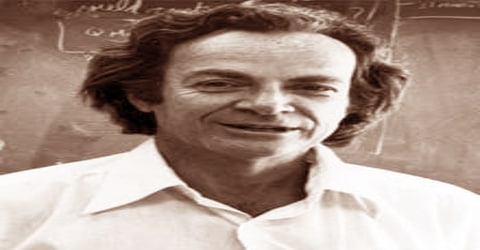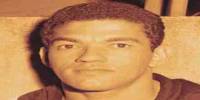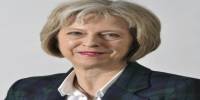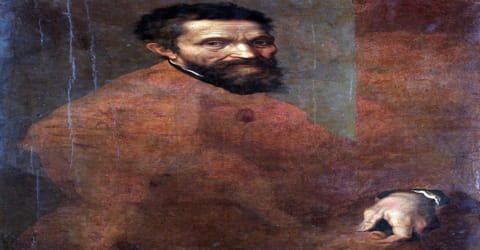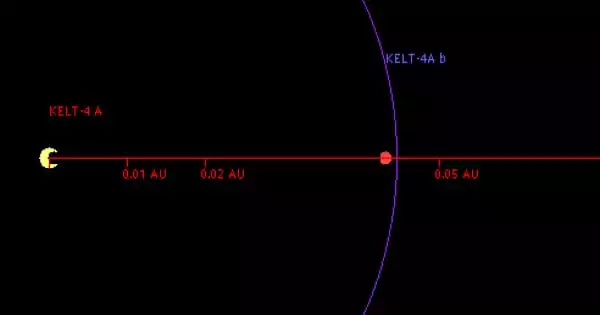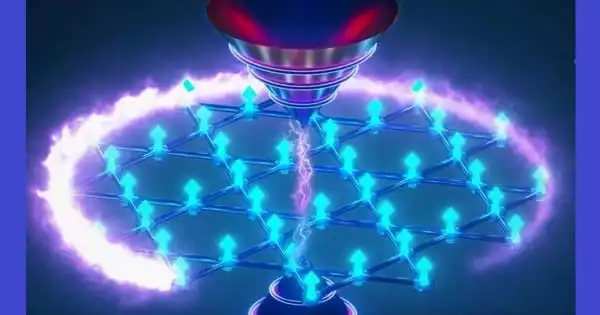Biography of Richard Feynman
Richard Feynman – American theoretical physicist.
Name: Richard Phillips Feynman
Date of Birth: May 11, 1918
Place of Birth: Queens, New York, United States
Date of Death: February 15, 1988 (aged 69)
Place of Death: Los Angeles, California, United States
Occupation: Physicist
Father: Melville Feynman
Mother: Lucille Phillips
Spouse/Ex: Arline Greenbaum (m. 1942-1945), Mary Louise Bell (m. 1952-1958), Gweneth Howarth (m. 1960-1988)
Children: Carl Feynman, Michelle Louise Feynman
Early Life
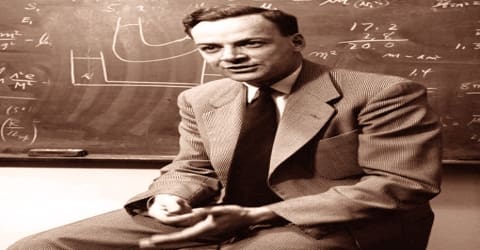
An American theoretical physicist who was widely regarded as the most brilliant, influential, and iconoclastic figure in his field in the post-World War II era, Richard Feynman was born on May 11, 1918, in Queens, New York City, to Lucille née Phillips, a homemaker, and Melville Arthur Feynman, a sales manager originally from Minsk in Belarus (then part of the Russian Empire). He is widely considered to be one of the greatest and most influential theoretical physicists in history. Feynman is known for his work in the path integral formulation of quantum mechanics, the theory of quantum electrodynamics, and the physics of the superfluidity of supercooled liquid helium, as well as in particle physics for which he proposed the parton model. For his contributions to the development of quantum electrodynamics, Feynman, jointly with Julian Schwinger and Shin’ichirō Tomonaga, received the Nobel Prize in Physics in 1965.
After growing up in Queens, New York City, Richard Feynman went on to receive his undergraduate degree from the Massachusetts Institute of Technology and a doctoral degree from Princeton University. He used his gained expertise in physics to contribute to the development of the atomic bomb, in what was called the Manhattan Project, during World War II. Another significant study which he undertook is the super-fluidity in super-cooled liquid helium. The Feynman diagrams as they are now known as a concept developed by this eminent scientist; the diagrams are used to pictorially represent the behavior of sub-atomic particles. Dabbling with particle physics, he came up with the Parton model. He later became credited with expanding physics research to the world of modern technologies through the creation of quantum computing and his theories concerning nanotechnology.
Feynman was a keen popularizer of physics through both books and lectures including a 1959 talk on top-down nanotechnology called There’s Plenty of Room at the Bottom and the three-volume publication of his undergraduate lectures, The Feynman Lectures on Physics. Feynman also became known through his semi-autobiographical books Surely You’re Joking, Mr. Feynman! and What Do You Care What Other People Think? and books are written about him such as Tuva or Bust! by Ralph Leighton and the biography Genius: The Life and Science of Richard Feynman by James Gleick.
Over the course of his career, Richard Feynman took on a number of assistantships and appointed positions at various prestigious institutions across the country. He presented lectures, which were later published and are now considered one of the most well-known books ever written on physics.
Childhood, Family and Educational Life

Richard Feynman, in full Richard Phillips Feynman, was born on May 11, 1918, in New York City, U.S. the eldest child of father Melville and mother Lucille. Both were Lithuanian Jews. Lucille gave birth to another boy, who died at only four weeks old, and a girl named Joan.
Feynman was a late talker and did not speak until after his third birthday. As an adult, he spoke with a New York accent strong enough to be perceived as an affectation or exaggeration so much so that his friends Wolfgang Pauli and Hans Bethe once commented that Feynman spoke like a “bum”. The young Feynman was heavily influenced by his father, who encouraged him to ask questions to challenge orthodox thinking, and who was always ready to teach Feynman something new. From his mother, he gained the sense of humor that he had throughout his life. As a child, he had a talent for engineering, maintained an experimental laboratory in his home, and delighted in repairing radios. When he was in grade school, he created a home burglar alarm system while his parents were out for the day running errands.
Feynman attended ‘Far Rockaway High School’ from 1931-1935, and then attended the ‘Massachusetts Institute of Technology’. In 1939, he was named a Putnam Fellow for a top-five performance in the ‘William Putnam Lowell Mathematical Competition’, one of the most prestigious academic competitions in the US and Canada. Feynman continued his studies at Princeton, where he was surrounded by peers in the field such as Albert Einstein, Wolfgang Pauli, and John Archibald Wheeler. He completed a thesis entitled ‘The Principle of Least Action in Quantum Mechanics’ in 1942, with Wheeler as his advisor.
Personal Life
Richard Feynman was married to his high-school sweetheart Arline Greenbaum until her death from tuberculosis in 1945. The demise of his wife caused much emotional turmoil in Richard’s life and the personal guilt for having made a contribution towards the destructive atomic bomb threw him into depression for some years.
Feynman and Mary Louise Bell had met in a cafeteria in Cornell, where she had studied the history of Mexican art and textiles. She later followed him to Caltech, where he gave a lecture. Feynman proposed to her by mail from Rio de Janeiro, and they married in Boise, Idaho, on June 28, 1952, shortly after he returned. They frequently quarreled and she was frightened by his violent temper. Their politics were different; although he registered and voted as a Republican, she was more conservative, and her opinion on the 1954 Oppenheimer security hearing (“Where there’s smoke there’s fire”) offended him. They separated on May 20, 1956. An interlocutory decree of divorce was entered on June 19, 1956, on the grounds of “extreme cruelty”. The divorce became final on May 5, 1958.
Feynman met Gweneth Howarth at a European conference, whom he married in 1960 after Gweneth was approved for US citizenship. Together, the two had a son Carl and adopted a daughter Michelle. It was later discovered that he had abdominal cancer, which he battled while performing investigative work on the Challenger. Near the end of his life, he took up art and became particularly interested in drawing portraits.
Richard Feynman’s parents were not religious, and by his youth, Feynman described himself as an “avowed atheist”. Many years later, in a letter to Tina Levitan, declining a request for information for her book on Jewish Nobel Prize winners, he stated, “To select, for approbation the peculiar elements that come from some supposedly Jewish heredity is to open the door to all kinds of nonsense on racial theory”, adding, “at thirteen I was not only converted to other religious views, but I also stopped believing that the Jewish people are in any way ‘the chosen people'”. Later in his life, during a visit to the Jewish Theological Seminary, he encountered the Talmud for the first time and remarked that it contained a medieval kind of reasoning and was a wonderful book.
Career and Works
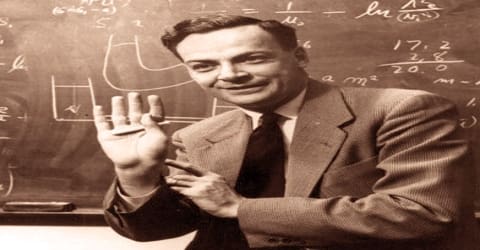
Richard Feynman received a Ph.D. from Princeton in 1942; his thesis advisor was John Archibald Wheeler. His doctoral thesis was titled “The Principle of Least Action in Quantum Mechanics”. Feynman had applied the principle of stationary action to problems of quantum mechanics, inspired by a desire to quantize the Wheeler-Feynman absorber theory of electrodynamics, and laid the groundwork for the path integral formulation and Feynman diagrams. A key insight was that positrons behaved like electrons moving backward in time.
Later that year, Feynman was asked to join the ‘Manhattan Project’ in Los Alamos, New Mexico for work on perfecting the atomic bomb before the Germans. His responsibilities on the project included calculating neutron equations for nuclear reactors and developing safety procedures for the storage of project materials until its completion in 1945.
At Los Alamos, Feynman became the youngest group leader in the theoretical division of the Manhattan Project. With the head of that division, Hans Bethe, he devised the formula for predicting the energy yield of a nuclear explosive. Feynman also took charge of the project’s primitive computing effort, using a hybrid of new calculating machines and human workers to try to process the vast amounts of numerical computation required by the project. He observed the first detonation of an atomic bomb on July 16, 1945, near Alamogordo, New Mexico, and, though his initial reaction was euphoric, he later felt anxiety about the force he and his colleagues had helped unleash on the world. His career then became a string of prestigious assistantships and professorships at competing universities, first as Professor of Theoretical Physics at ‘Cornell University’ from 1945-1950.
Feynman was not the only frustrated theoretical physicist in the early post-war years. Quantum electrodynamics suffered from infinite integrals in perturbation theory. These were clear mathematical flaws in the theory, which Feynman and Wheeler had unsuccessfully attempted to work around. “Theoreticians”, noted Murray Gell-Mann, “were in disgrace.” In June 1947, leading American physicists met at the Shelter Island Conference. For Feynman, it was his “first big conference with big men … I had never gone to one like this one in peacetime.” The problems plaguing quantum electrodynamics were discussed, but the theoreticians were completely overshadowed by the achievements of the experimentalists, who reported the discovery of the Lamb shift, the measurement of the magnetic moment of the electron, and Robert Marshak’s two-meson hypothesis.
In 1948, Feynman published his representations of mathematical sequences of subatomic particles, named the ‘Feynman Diagrams’, contributing to the understanding of the quantum field and solid-state theories. For nine years after, he was appointed Professor of Theoretical Physics at the ‘California Institute of Technology’, from 1950-1959. The physicist dedicated research to breakthroughs in superfluidity of super-cold liquid helium and “weak decay,” competing against his contemporaries in the field.
In 1950 Feynman became a professor of theoretical physics at the California Institute of Technology (Caltech), where he remained the rest of his career. In the early 1950s, Feynman provided a quantum-mechanical explanation for the Soviet physicist Lev D. Landau’s theory of superfluidity i.e., the strange, frictionless behavior of liquid helium at temperatures near absolute zero. In 1958 he and the American physicist Murray Gell-Mann devised a theory that accounted for most of the phenomena associated with the weak force, which is the force at work in radioactive decay. Their theory, which turns on the asymmetrical “handedness” of particle spin, proved particularly fruitful in modern particle physics. During his years at Caltech, Feynman offered prizes for creating the world’s smallest motor and writing the contents of the Encyclopedia Britannica on a pinhead.
In the 1960s, Feynman helped to revamp Caltech’s physics department by delivering a series of lectures and introductory level explanations to freshman at the university. These lectures were written and published as a set of textbooks called ‘The Feynman Lectures on Physics’. He was awarded the 1965 Nobel Prize in Physics for work on quantum electrodynamics which expanded upon his thesis. Feynman’s lectures at Caltech evolved into the books Quantum Electrodynamics (1961) and The Theory of Fundamental Processes (1961).
In 1961 Richard Feynman began reorganizing and teaching the introductory physics course at Caltech; the result, published as The Feynman Lectures on Physics, 3 vol. (1963-65), became a classic textbook. Feynman’s views on quantum mechanics, scientific method, the relations between science and religion, and the role of beauty and uncertainty in scientific knowledge are expressed in two models of science writing, again distilled from lectures: The Character of Physical Law (1965) and QED: The Strange Theory of Light and Matter (1985).
Feynman also formulated a mathematical theory that dealt with the phenomenon of superfluidity in liquid helium. In collaboration with Murray Gell-Mann, he extensively studied weak interactions such as beta decay. Feynman played a vital role in the development of quark theory by presenting his Parton model of high energy proton collision processes.
In 1968, while working with experimenters at the Stanford Linear Accelerator on the scattering of high-energy electrons by protons, Richard Feynman invented a theory of “partons,” or hypothetical hard particles inside the nucleus of the atom, that helped lead to the modern understanding of quarks. Feynman’s stature among physicists transcended the sum of even his sizable contributions to the field.
Feynman is credited with the introduction of fundamental computational techniques and notations into physics. The Feynman diagrams have radically changed the way in which basic physical processes are conceptualized and calculated. As a legendary educator, Feynman was awarded the Oersted Medal for Teaching in 1972.
In 1974, Feynman delivered the Caltech commencement address on the topic of cargo cult science, which has the semblance of science, but is only pseudoscience due to a lack of “a kind of scientific integrity, a principle of scientific thought that corresponds to a kind of utter honesty” on the part of the scientist. He instructed the graduating class that “The first principle is that you must not fool yourself and you are the easiest person to fool. So you have to be very careful about that. After you’ve not fooled yourself, it’s easy not to fool other scientists. You just have to be honest in a conventional way after that.” Feynman served as a doctoral advisor to 31 students.
In 1985, Feynman published a book of stories of his life and career, Surely You’re Joking, Mr. Feynman, which reached the national bestseller list. In 1986 he was invited to investigate the explosion of NASA space shuttle Challenger, and Richard ascertained that the fatal explosion was caused due to low launch day temperatures.
On a mission to increase the understanding of physics among the general public, Feynman wrote “The Character of Physical Law” and “Q.E.D: The Strange Theory of Light and Matter”. He also published various advanced works that have become definitive references and textbooks for scholars and students alike.
In a televised demonstration, Feynman showed that the rubber rings that sealed the joints of the spacecraft were unable to expand quickly enough in the low temperatures. His findings shed scientific and political light on the matter, and this was his final major contribution to the field of physics.
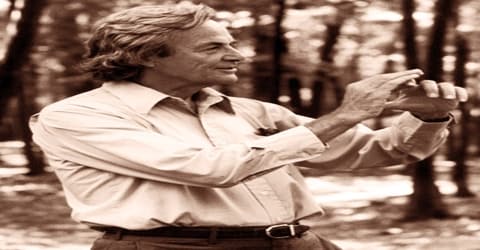
When Richard Feynman died in 1988 after a long struggle with cancer, his reputation was still mainly confined to the scientific community; he was not a household name. Many Americans had seen him for the first time when, already ill, he served on the presidential commission that investigated the 1986 explosion of the space shuttle Challenger. He conducted a dramatic demonstration at a televised hearing, confronting an evasive NASA witness by dunking a piece of rubber seal in a glass of ice water to show how predictable the failure of the booster rocket’s rubber seal might have been on the freezing morning of Challenger’s launch. He added his own appendix to the commission’s report, emphasizing the space agency’s failures of risk management.
Awards and Honor
Richard Feynman was honored with several awards and achievements during his lifetime, for his contribution to scientific advancement. He received the prestigious ‘Albert Einstein Award’ and ‘E.O. Lawrence Award’.
Feynman was lauded with the Nobel Prize in Physics in 1965 for his work on quantum electrodynamics.
Feynman won the ‘Oersted Medal’ in 1972 for being an outstanding teacher of physics. He won the ‘National Medal of Science’ for contributions to physics in 1979.
Death and Legacy
In 1978, Richard Feynman sought medical treatment for abdominal pains and was diagnosed with liposarcoma, a rare form of cancer. Surgeons removed a tumor the size of a football that had crushed one kidney and his spleen. Further operations were performed in October 1986 and October 1987. He was again hospitalized at the UCLA Medical Center on February 3, 1988. A ruptured duodenal ulcer caused kidney failure, and he declined to undergo the dialysis that might have prolonged his life for a few months. Watched over by his wife Gweneth, sister Joan, and cousin Frances Lewine, Feynman died on February 15, 1988, at age 69. His burial was at Mountain View Cemetery and Mausoleum in Altadena, California. His last words were: “I’d hate to die twice. It’s so boring.”
Richard Feynman completed his thesis ‘The Principle of Least Action in Quantum Physics’ which laid the foundation for his Nobel Prize winning work on quantum electrodynamics. The theory consisted of two parts, while the first catered to path integral formulation of quantum mechanics, the other dealt with pictorial representation of sub-atomic particles, better known as the ‘Feynman Diagrams’. ‘The Feynman Lectures on Physics’ was published in 1964 from a series given at Caltech, becoming arguably the most popular physics textbooks.
His bold and colorful personality, unencumbered by false dignity or notions of excessive self-importance, seemed to announce: “Here is an unconventional mind.” Richard Feynman was a master calculator who could create a dramatic impression in a group of scientists by slashing through a difficult numerical problem. His purely intellectual reputation became a part of the scenery of modern science. Feynman diagrams, Feynman integrals, and Feynman rules joined Feynman stories in the everyday conversation of physicists. They would say of a promising young colleague, “He’s no Feynman, but….” His fellow physicists envied his flashes of inspiration and admired him for other qualities as well: a faith in nature’s simple truths, a skepticism about official wisdom, and an impatience with mediocrity.
Information Source:
